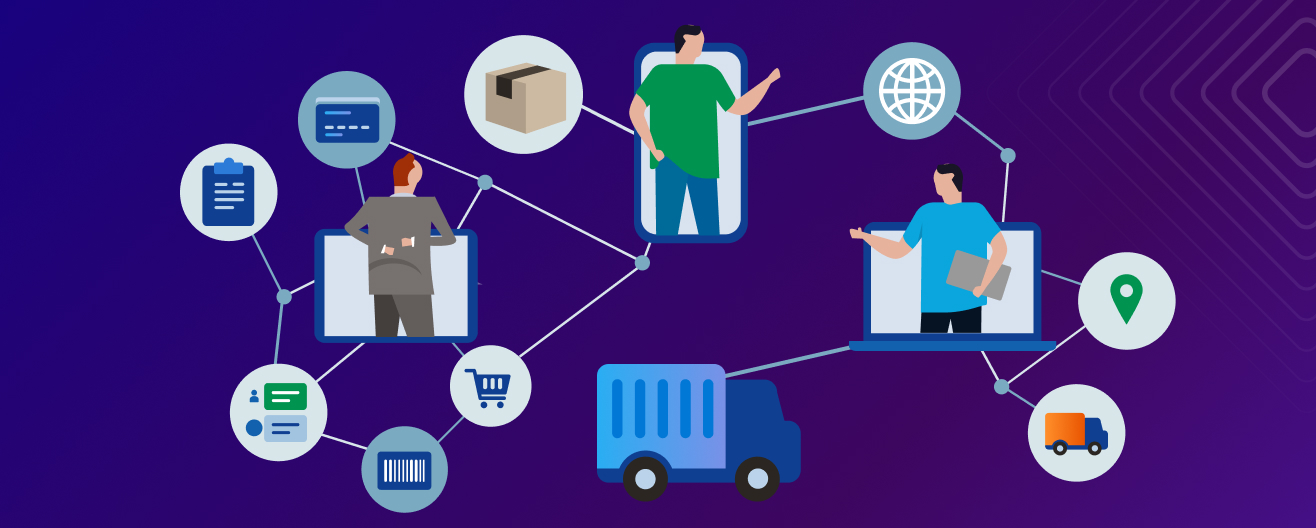
Supply chains today face mounting pressure to deliver efficiency, transparency, and real-time tracking. From fake products to mismanaged inventory, traditional systems are increasingly falling short. This is where Blockchain Supply Chain Tracking is redefining how businesses operate by offering tamper-proof, decentralized solutions that ensure trust and accountability. Businesses looking to build decentralized platforms can benefit from Blockchain Development Services to ensure secure, scalable solutions tailored to logistics
If you are trying to understand how to use blockchain in supply chain management or want to learn how to create a blockchain logistics platform, this technology offers big advantages. It enables companies to store and share information in a secure and trusted manner.
By building blockchain-based supply chain solutions, businesses can track products from origin to end. This means every step from making the product to delivering it can be recorded. Using blockchain for tracking products in the supply chain helps stop fraud, errors, and delays.
Traditional supply chains face many challenges that can reduce efficiency and trust. Blockchain technology offers strong solutions by improving visibility, security, and automation. Here is how it helps:
Creating a blockchain-based supply chain system involves several steps from planning the process to choosing the right tools and technology. Here is how it works in simple terms:
1. What data will be stored?
2. Who can access and update records?
3. How will products be tracked at each stage?
You may also decide if you want to use smart contracts, automated rules that carry out actions when certain conditions are met, such as releasing payment after delivery is confirmed.
1. Write smart contracts.
2. Connect the blockchain to your supply chain system.
3. Create a user-friendly interface for your team and partners.
4. This stage may also include mobile or web dashboards for real-time tracking.
One of the biggest problems in supply chains is the lack of clear, real-time tracking. Businesses often struggle to see where their products are, who handled them, or if they were damaged or delayed. This is where blockchain makes a big difference. Let’s look at how blockchain improves supply chain visibility simply and effectively:
With traditional systems, each partner uses their own database. This causes delays and confusion. Using blockchain supply chain tracking, all parties’ suppliers, shippers, and retailers can access one shared, secure system. Everyone sees the same data, reducing errors and building trust.
Businesses need to know where products come from and where they go. By building blockchain supply chain solutions, every action, such as shipping, storage, or delivery, is recorded and time-stamped. This gives you full traceability from origin to customer.
Once data is added to the blockchain, it cannot be changed. This makes it perfect for industries that want to avoid fraud or counterfeits. Companies asking how to use blockchain in the supply chain quickly see how helpful it is in protecting their data and brand.
Thanks to IoT devices, barcodes, or QR scans, product information gets updated instantly. If you’re exploring the steps to develop a blockchain supply chain app, including real-time automation features, it will greatly improve tracking and reduce delays.
By learning how to create a blockchain logistics platform, businesses can manage supply levels, predict problems, and respond faster to changes. This visibility helps avoid stockouts or delays, leading to smarter decisions and better customer service.
When companies use blockchain for tracking products in the supply chain, they gain detailed insight into where each item is and what condition it’s in. This is especially helpful in food, medicine, and electronics, where safety and quality matter most.
The biggest benefits of blockchain in logistics and supply chains come from improved accuracy, faster issue resolution, and stronger customer confidence. When everyone sees the same verified data, the supply chain runs smoother from end to end.
Using blockchain in supply chains helps companies improve trust, reduce errors, and track products better. It connects all supply chain partners through a shared, secure system where every action is recorded and cannot be changed.
Building blockchain supply chain solutions means creating a secure digital system that records every activity in your supply chain. This system helps track goods, reduce fraud, improve efficiency, and build trust among suppliers, manufacturers, transporters, and customers.
Blockchain Supply Chain Tracking is at the heart of these solutions. It lets every partner in the chain see where a product is, who handled it, and when. This makes tracking faster, more transparent, and free from tampering.
When learning how to use blockchain in a supply chain, it’s important to understand that blockchain stores all supply chain events in one shared system. Each update, such as when goods are shipped or received, is saved in blocks that cannot be changed. This removes the need for paper records and avoids making mistakes.
One of the first steps to develop a blockchain supply chain app is choosing a blockchain platform. You can pick public platforms such as Ethereum or private ones like Hyperledger. Then, design an app where supply chain events such as packaging or delivery are updated in real time.
Knowing how to create a blockchain logistics platform means building a shared environment where all supply chain members work together. It includes adding tools such as QR codes or IoT devices that automatically update the blockchain as items move through the blockchain.
Using blockchain for tracking products in the supply chain gives every item a unique digital identity. It makes it easy to confirm the product’s origin, detect fakes, and monitor temperature or handling conditions, especially in industries like food and medicine.
The major benefits of blockchain in logistics and supply chain include faster deliveries, fewer disputes, improved customer satisfaction, and lower risk of fraud. When everyone sees the same trusted data, the entire system runs more smoothly and confidently.
Supply chain visibility means being able to see where products are at every step from the supplier to the customer. In traditional supply chains, this is hard due to delays, a lack of trust, and missing data. Blockchain helps fix this by providing real-time, secure, and shared information that everyone in the chain can trust.
Blockchain is changing how supply chains and logistics systems work. By making data secure, transparent, and instantly available to all parties, blockchain helps businesses run faster, safer, and more efficiently.
Blockchain is transforming supply chain management by bringing more transparency, security, and efficiency to every step of the process. From tracking products in real time to reducing fraud and improving trust, it offers real value to logistics and business operations.
By understanding how to create a blockchain logistics platform, using smart contracts, and connecting partners on a shared system, businesses can solve long-standing challenges like delays, counterfeiting, and lack of visibility.
Technical Content Writer
Kavita has a strong background in technology and writes about cybersecurity, software development, and digital marketing. She makes complex topics simple and easy to understand. Her content helps businesses, developers, and marketers learn about cybersecurity threats, best practices, software development, and digital strategies to stay informed and succeed online.



